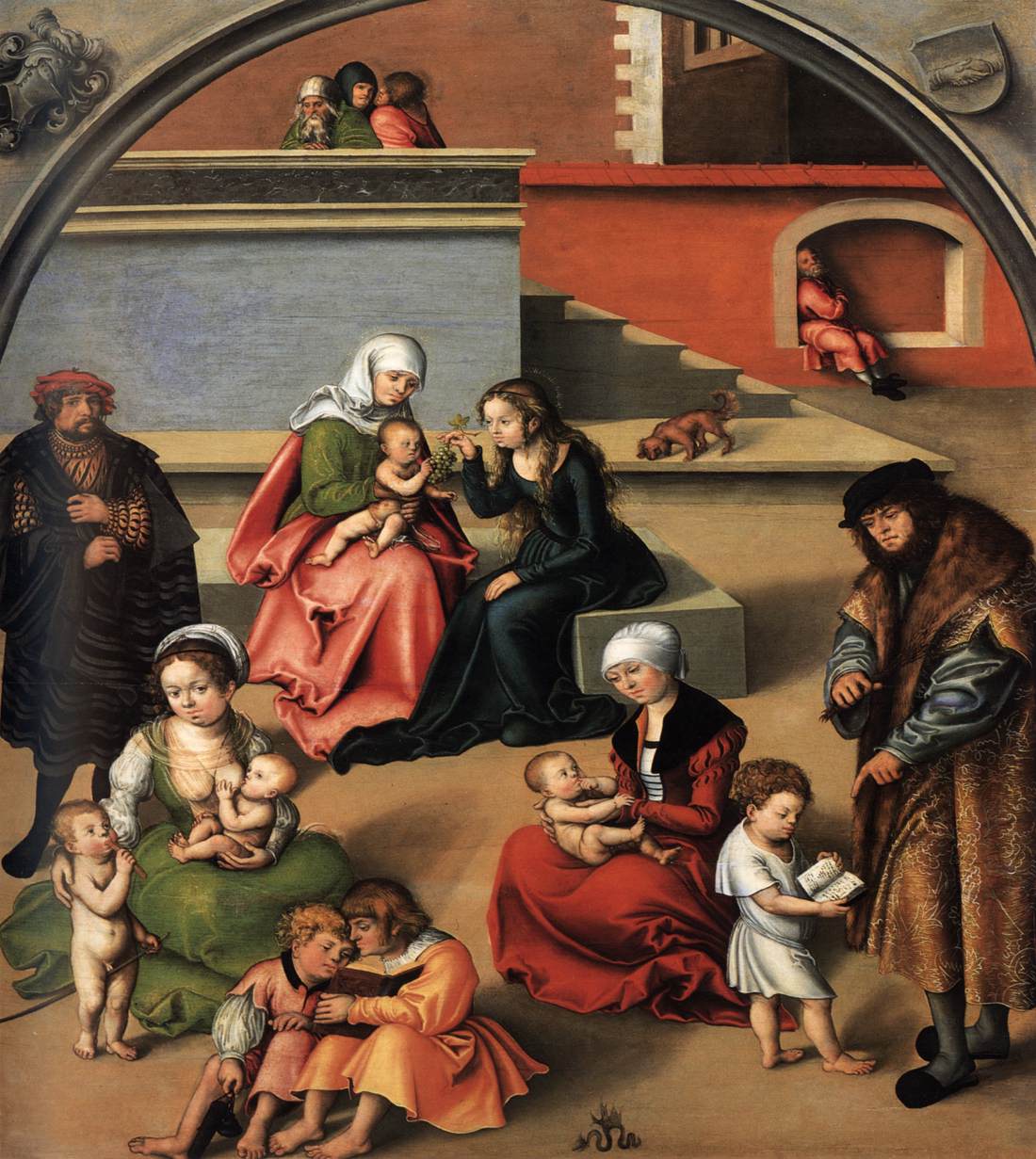Description
The painting "The Holy Kinship with a Self-Portrait" by German artist Lucas Cranach the Elder is a Nordic Renaissance masterpiece that has fascinated art lovers for centuries. Measuring 89 x 71 cm, this artwork features a complex and detailed composition that combines religious and personal elements.
In the painting, Cranach portrays himself as one of the members of the Holy Family, along with his wife and children. The central figure is the Virgin Mary, surrounded by her mother, Saint Anne, and her husband, Saint Joseph. Saints John the Baptist and John the Evangelist can also be seen, as well as various members of the Cranach family.
Cranach's artistic style is characterized by his attention to detail and his ability to create complex textures and patterns. In this painting, you can appreciate the details in the fabrics of the characters' clothing, as well as in the objects that surround them. Furthermore, the perspective used by Cranach is very interesting, since the characters are arranged in different planes, creating a sensation of depth and movement.
Color is another prominent aspect of this artwork. Cranach uses a palette of vibrant, saturated colors that contrast with the darker tones of the backgrounds and shadows. This creates a feeling of lightness and vitality in the painting.
The history of the painting is also very interesting. It was created in 1509, during the time when Cranach was court painter to the Elector of Saxony. The work was commissioned by the Bishop of Brandenburg as a gift to Pope Julius II. The painting was later sold to a private collector and eventually acquired by the National Gallery of Canada in 1925.
In summary, "The Holy Kinship with a Self-Portrait" is an impressive work of art that combines religious and personal elements in a complex and detailed composition. Cranach's artistic style, his use of color and perspective, make this painting one of the most interesting works of the Nordic Renaissance.

